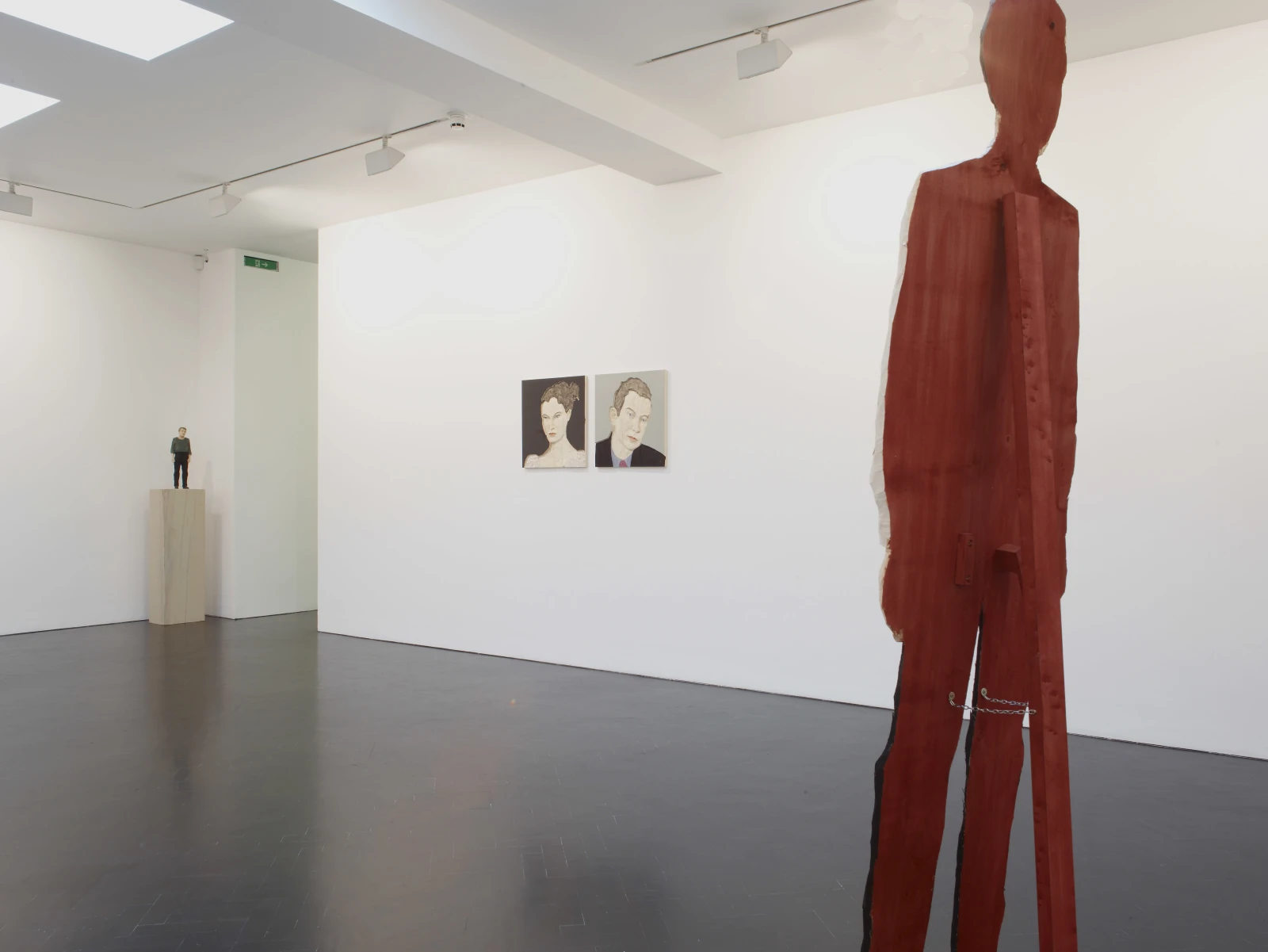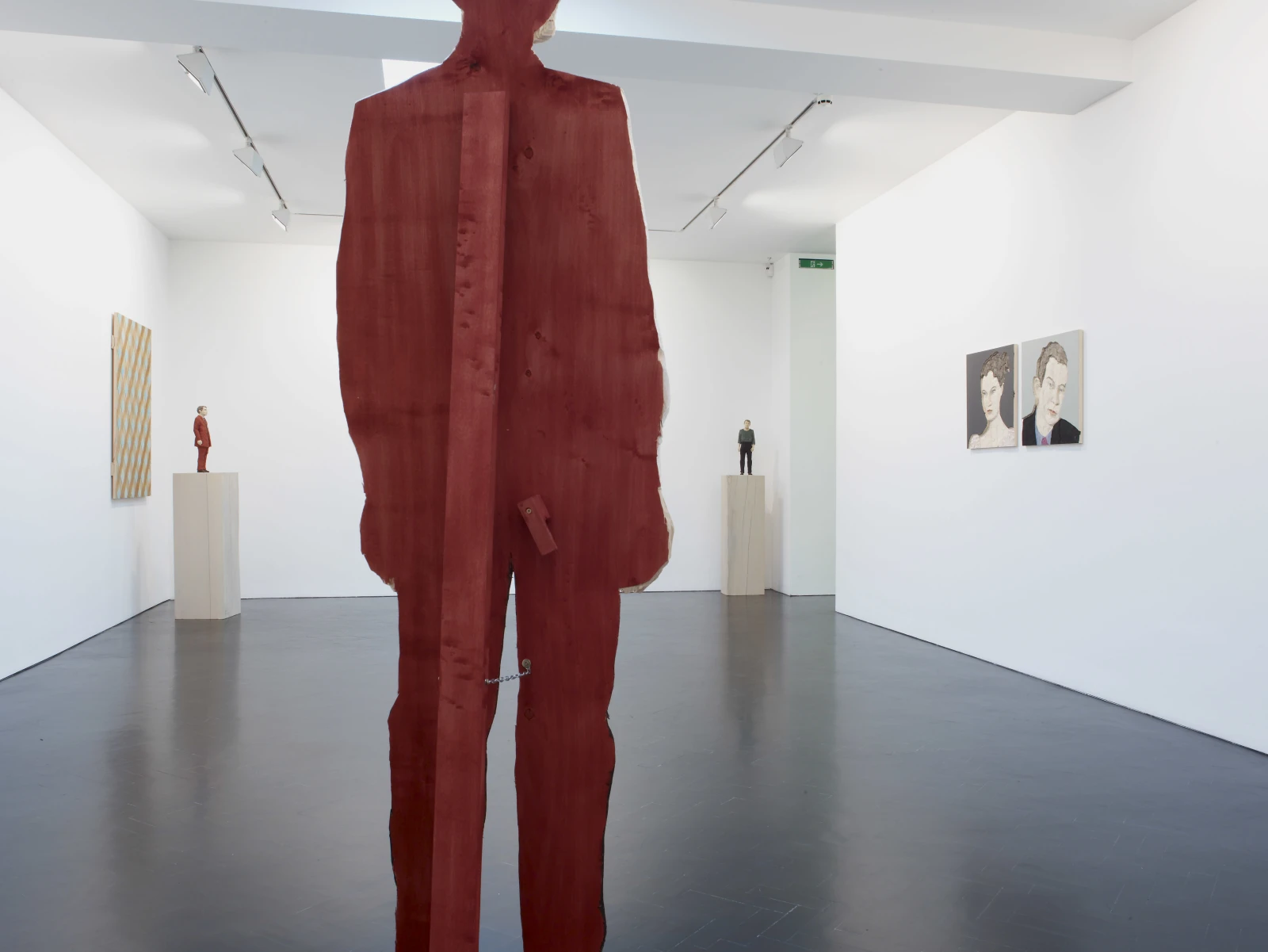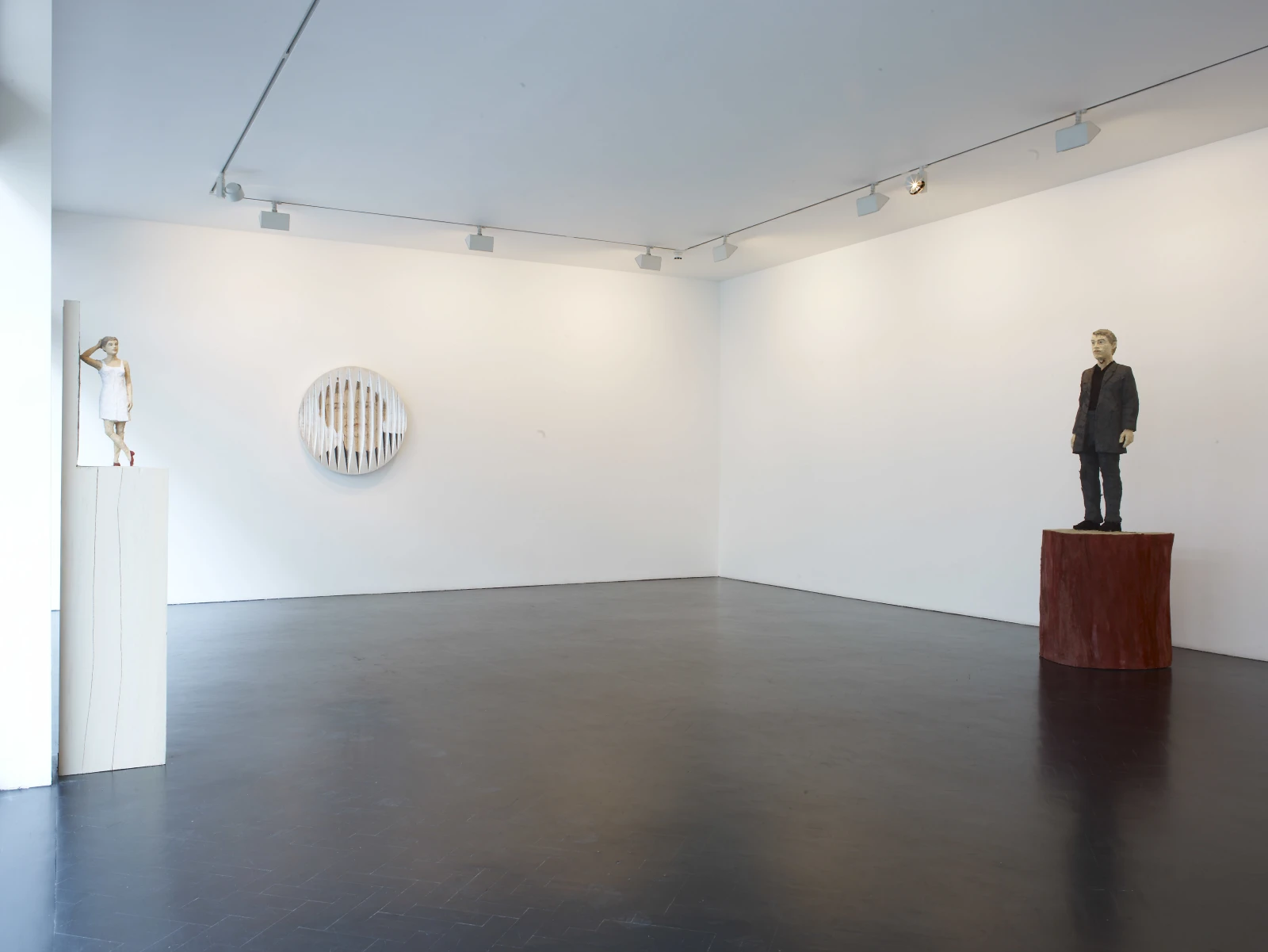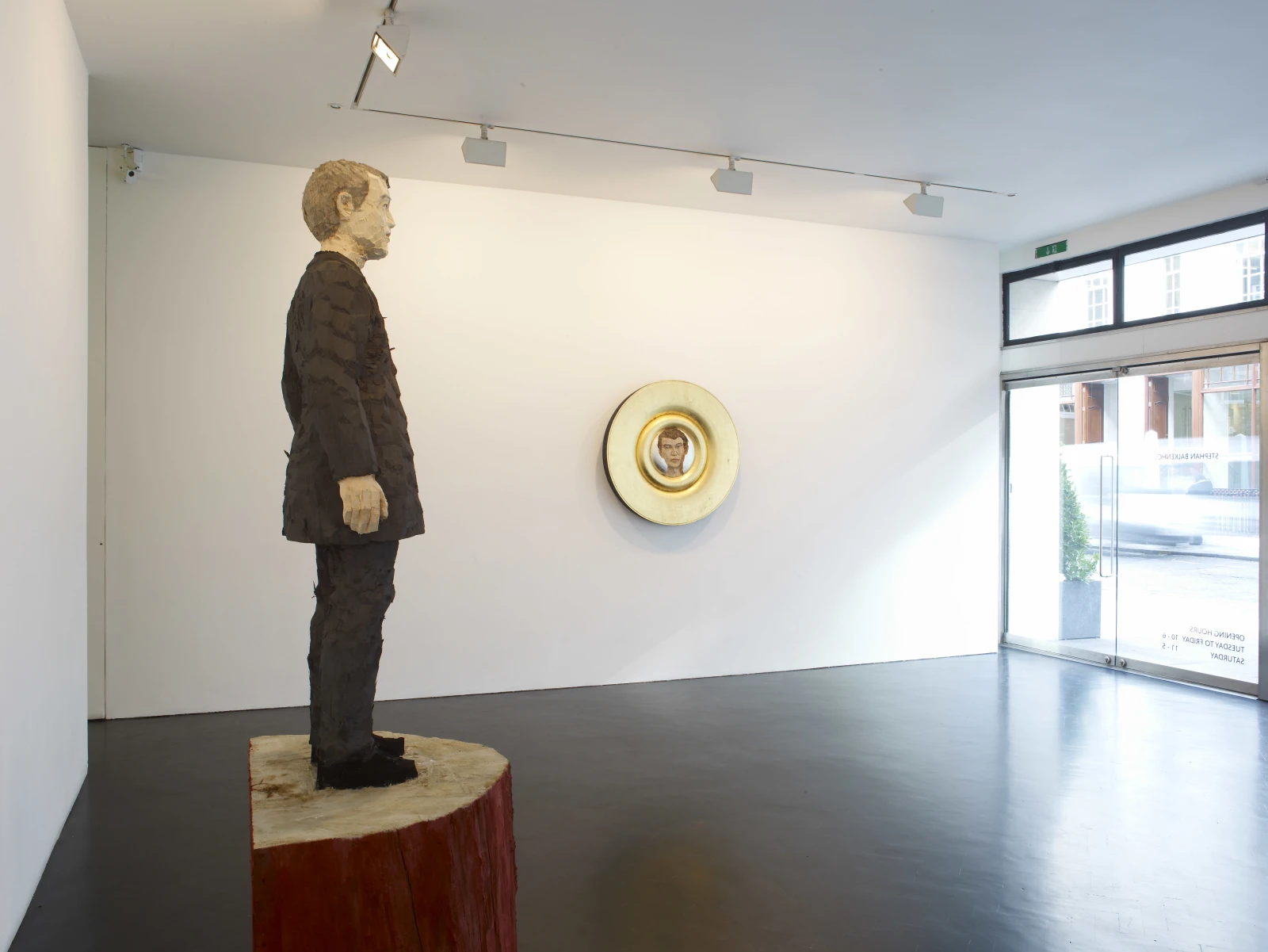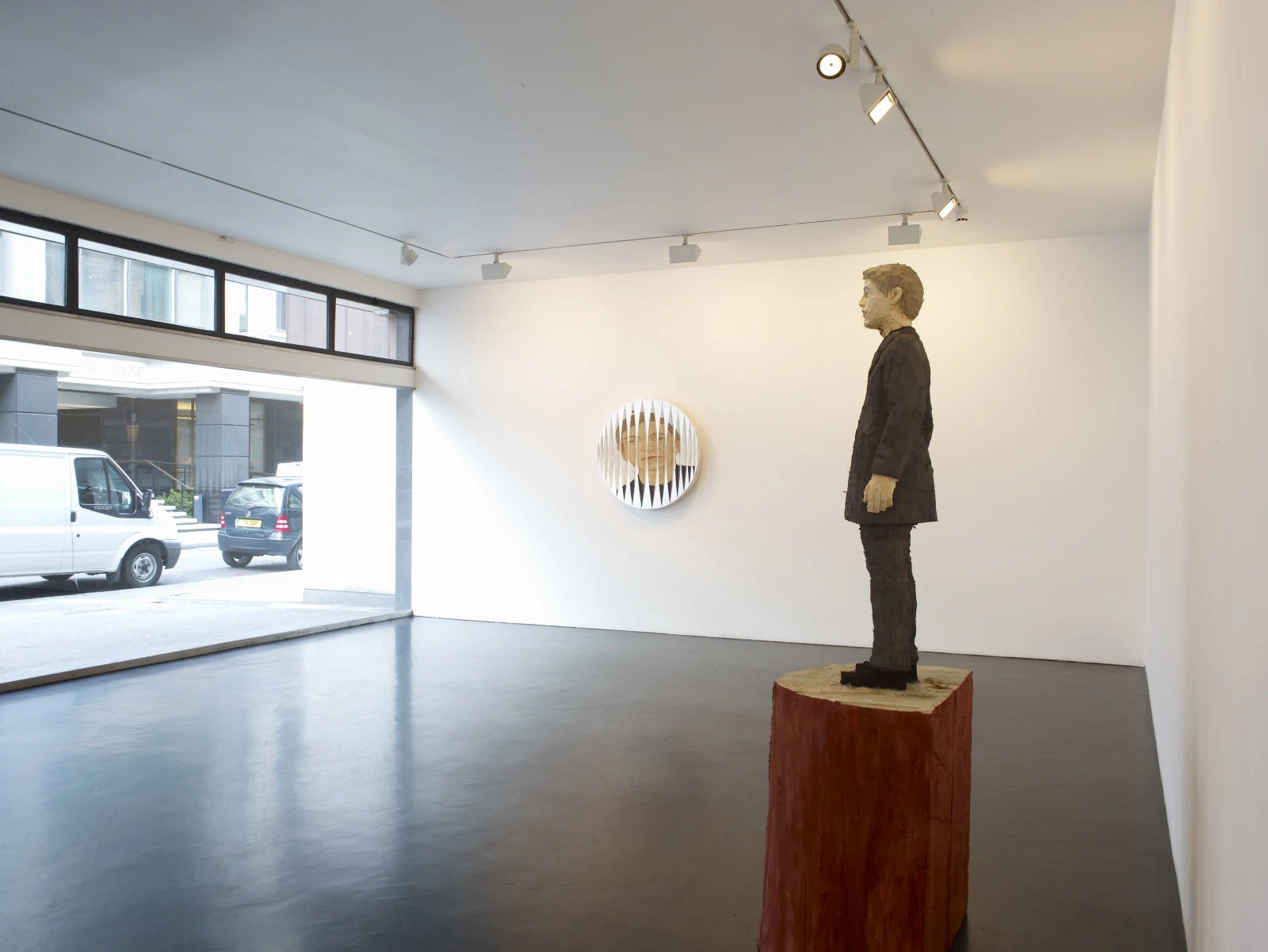
Stephan Balkenhol
Overview
The figures emanate timelessness: simple, plain- coloured clothing and the confident yet unassuming poses of the everyday man are key here.
Stephen Friedman Gallery is delighted to present an exhibition of new work by German artist Stephan Balkenhol. This is the artist’s seventh exhibition at the gallery and follows on from his acclaimed public sculpture sempre più at the Roman Forum in 2009. Balkenhol has developed a significant repertoire of public commissions spanning his twenty-year career, with installations in front of the Blackfriars Bridge in London, at the entrance of the Hamburg Zoo and at the Städelsches Kunstinstitut in Frankfurt.
As a renowned sculptor, Balkenhol is recognised not only for the technical prowess with which he hand carves each of his wooden sculptures, but for his continual devotion to exploring the role of the figure within contemporary art.
Stephen Friedman Gallery is delighted to present an exhibition of new work by German artist Stephan Balkenhol. This is the artist’s seventh exhibition at the gallery and follows on from his acclaimed public sculpture sempre più at the Roman Forum in 2009. Balkenhol has developed a significant repertoire of public commissions spanning his twenty-year career, with installations in front of the Blackfriars Bridge in London, at the entrance of the Hamburg Zoo and at the Städelsches Kunstinstitut in Frankfurt.
As a renowned sculptor, Balkenhol is recognised not only for the technical prowess with which he hand carves each of his wooden sculptures, but for his continual devotion to exploring the role of the figure within contemporary art.
“The demystification of monumental sculpture pursued by Balkenhol was obtained by the total anonymity of the subject, as well as the handcrafting of the material...(his) sculptures assert themselves like anonymous but disturbing presences.” Ludovico Pratesi ‘sempre più’ pp.50-51, 2010
Attending the Hamburg School of Fine Arts from 1976 – 82, Balkenhol was exposed to the Minimalist and Conceptual trends popular at that time, with tutors including Nam June Paik and Sigmar Polke. His experience here profoundly affected his subsequent artistic practice. Sensing an absence in these two schools of thought, Balkenhol sought out the human figure and began a considered campaign to reintroduce it into contemporary art, declaring: “I must reinvent the figure to resume an interrupted tradition”.
The artist’s unique sculptures combine anonymous human figures with tall pedestals, all hand carved from singular blocks, often of poplar or wawa wood. The figures emanate timelessness: simple, plain- coloured clothing and the confident yet unassuming poses of the everyday man are key here. Yet the monumentality so often associated with the history of figurative sculpture is playfully disrupted. The works are shrunken in scale and display proudly the rough, chiselled and hand painted surface upon which the artist has worked. Concurrently, a semblance of the Minimalist tradition still resides in the calm, understated beauty of these works.
The figures emanate timelessness: simple, plain- coloured clothing and the confident yet unassuming poses of the everyday man are key here.

